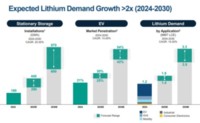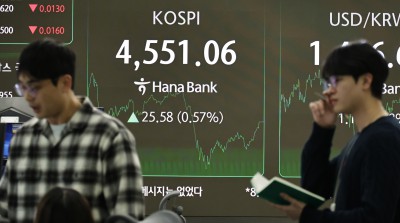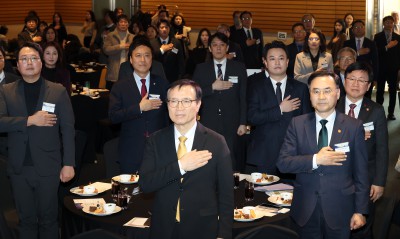Summary of a Speech Given by Toshihiko Fukui, Governor of the Bank of Japan, to the Board of Councillors of Nippon Keidanren (Japan Business Federation) in Tokyo on December 25, 2006
December 25, 2006
Bank of Japan
Contents
Introduction
I. Developments in Overseas Economies
II. Developments in the Corporate Sector
III. Developments in the Household Sector
IV. Developments in Prices
V. Conduct of Monetary Policy in 2006
VI. New Framework for the Conduct of Monetary Policy
Closing Remarks
Introduction
There is now less than a week until the end of 2006. The year has been marked by the sustained recovery of Japan's economy, which began in January 2002, exceeding the record of the Izanagi boom, the longest postwar economic expansion (57 months during 1965-70). The Bank of Japan terminated the quantitative easing policy in March and in July returned to pursuing a monetary policy in which it controls interest rates. Although Japan's economy still faces further structural changes going forward, the year 2006 can be regarded as a year of steady progress toward normalization after the long adjustment phase since the bursting of the bubble. Today I will review this year's developments in the economy and prices as well as the conduct of monetary policy, and talk about the outlook for 2007.
I. Developments in Overseas Economies
One of the factors behind the sustained recovery of Japan's economy is the continued strong growth of overseas economies. According to the International Monetary Fund (IMF), the global economy is likely to register growth of around 5 percent in 2006 for the third consecutive year. It is a generally accepted view that the global economy will continue to expand in 2007, at around the same pace as in 2006, across a broader range of regions.
As a risk factor to this outlook, developments in the U.S. economy should be mentioned. The pace of growth in the U.S. economy has been slowing recently reflecting decreases in housing investment, while private consumption has so far been firm with a limited slowdown in the pace of growth. Since the adjustment in the housing market seems to be continuing, attention should be paid to future developments in that market and the possible negative effects on private consumption and production. As for prices, the rate of increase in the core consumer price index is still relatively high, despite a moderate decline in crude oil prices. We basically think that inflation pressures are likely to ease gradually in line with the deceleration of economic expansion and the U.S. economy is likely to realize a soft landing and move toward sustainable growth, but both upside and downside risks should be borne in mind.
With regard to developments in other regions, China's economy has continued to expand strongly and economic recovery in the euro area has become more evident. Oil-producing countries, especially those of the Middle East, and the ASEAN economies continue to show steady growth. Given these developments, our main scenario is that the global economy as a whole will likely keep expanding through 2007, with possible slowing growth in the U.S. economy being offset by high growth in other regions.
II. Developments in the Corporate Sector
Japanese firms are succeeding in utilizing the strong growth of overseas economies to realize good business performance. In 2006, the strength in the corporate sector, as seen in steady growth of profits and increases in business fixed investment, became more evident. The recently released December Tankan (Short-Term Economic Survey of Enterprises in Japan) shows that firms are projecting growth in their current profits for the fifth consecutive year since fiscal 2002 and the ratio of current profits to sales is exceeding the peak reached in the bubble era. In this situation, business sentiment continues to be favorable and firms are planning to increase fixed investment for the fourth consecutive year. Moreover, their projections of both current profits and fixed investment for fiscal 2006 have been revised upward from the September Tankan.
Nevertheless, we believe the current strength in business fixed investment does not indicate "overheating," given that firms are increasing investment to reinforce their production capacity not only to meet domestic demand but also to capture opportunities for higher profits in growing overseas markets. Firms continue to scrutinize the investment profitability of each project amid greater exposure to the discipline of the capital market. Continuation of this disciplined investment stance under accommodative financial conditions is important if Japan's economy is to follow the path of sustainable growth.
III. Developments in the Household Sector
The positive influence of the strength in the corporate sector is feeding through to the household sector at a moderate pace. Throughout 2006, the number of employees has increased steadily. A closer look reveals that not only part-time employees but also full-time employees have been increasing steadily. Many firms seem to have hired a greater number of new graduates this year. The December Tankan shows that both large and small firms are planning to continue hiring more new graduates in the coming year. Labor market conditions are tightening as suggested by the fact that the annual average of the ratio of job offers to applicants is almost certain to exceed 1.00 for the first time in 14 years and the unemployment rate decreased further from last year's level. As for wages, with overtime and bonus payments rising, household income overall is increasing.
Nonetheless, the pace at which the positive influence of the corporate sector is feeding through to the household sector is, in fact, slow relative to the corporate sector's strength. This is evident especially in regular payments, which remain virtually unchanged year on year. This seems to be responsible for the often-heard statement that it is difficult to realize that Japan is in the middle of the longest postwar economic expansion. The slowness of the increase in regular payments is attributable to both the stance of firms and the preference of employees: given the intensifying global competition, firms remain cautious about raising regular payments because this is likely to push up fixed costs; while employees, having experienced a severe employment situation, continue to prefer stable employment to a wage increase.
However, in a situation where the population of those 15 years old and over has been leveling off, further tightening of labor market conditions seems inevitable if demand for employees remains on the rise in line with the continuing economic expansion. Given this situation, upward pressures on wages are likely to increase gradually. Wages for part-time and temporary workers have, in fact, started rising.
If an increase in wages becomes more apparent, the pace of increase in household income is expected to accelerate, thereby firming the sustainability of the upward trend in private consumption. Some indicators related to private consumption have recently been somewhat sluggish, partly reflecting unfavorable weather conditions and consumers holding back from buying before the introduction of new products. Although these developments continue to require close monitoring, our basic view is that private consumption will remain on the rise if increases in household income are in prospect.
Although, as I explained, developments in the corporate sector have been somewhat stronger than projected while those in the household sector have been somewhat weaker, we believe the basic mechanism of an economic expansion based on a virtuous circle of production, income, and spending is in operation. Nevertheless, given the fact that there are some weak developments in indicators related to private consumption and consumer prices, we will carefully examine various types of incoming data and information.
IV. Developments in Prices
With these developments in the economy, the environment surrounding prices has been changing, albeit gradually. In the December Tankan, for the first time in more than a decade, the number of firms that reported a shortage of production capacity outnumbered those reporting an excess, and it has become clear that firms are increasingly feeling a shortage of labor. These developments imply that resource utilization has been rising. Wages are increasing, albeit moderately, particularly in special and overtime payments, and downward pressure on prices stemming from declining unit labor costs has been abating. Furthermore, inflation forecasts of households and firms are being revised upward. For instance, in the December Tankan, the share of firms that replied their sales prices had risen compared to three months earlier increased to levels not seen since the early 1990s.
With such changes in the environment surrounding prices, year-on-year changes in domestic corporate goods prices rose to around 3.5 percent in mid-2006, reflecting increases in prices of international commodities such as crude oil. Although the pace of increase has recently been slowing somewhat due to a softening of crude oil prices, it is expected to continue its uptrend if there were no large fluctuations caused by commodity prices and foreign exchange rates.
On the other hand, although the year-on-year rate of change in the consumer price index (CPI) has been on a positive trend, the rate of increase remains very low relative to the improvement in the economic situation. It is possible that the sensitivity of prices to changes in economic activity has been decreasing compared to the past. This tendency has been observed in recent years in economies overseas as well. It is thought that economic globalization as well as deregulation and advances in information and communication technology are behind this phenomenon. If competition with products imported from newly industrialized countries heightens, inflationary pressure is likely to be contained. Likewise, if firms, faced with intensified global competition, become more cautious in raising wages, price developments will be influenced. In the case of Japan, where year-on-year changes in the CPI have been in the process of improving from negative territory, the rate of increase in the CPI tends to be low compared with other major economies. We project that the rate of increase in the CPI will gradually rise as the economy continues its long expansion. However, the pace at which it rises should continue to be watched carefully.
V. Conduct of Monetary Policy in 2006
Looking back on the conduct of monetary policy this year, the Bank terminated the quantitative easing policy in March, and in July it raised the operating target of money market operations (the uncollateralized overnight call rate) from "effectively zero percent" to "around 0.25 percent," bringing the zero interest rate environment to an end after five years.
An underlying factor that enabled us to make this decision was the fact that structural adjustment pressure in the corporate sector and the financial system, which had continued since the bursting of the economic bubble, had mostly been removed. When we introduced the quantitative easing policy, the Japanese economy was in a recession triggered by the collapse of the global IT bubble. Financial institutions were burdened by a huge amount of nonperforming loans (NPLs) and there was strong concern about the stability of the financial system. In this situation, a risk of the economy falling into a vicious circle of falling prices and deteriorating economic activity, in other words a deflationary spiral, was also a concern.
In these circumstances, the quantitative easing policy played a significant role in maintaining the stability of the financial markets and the accommodative financial environment and in preventing a contraction of economic activity. Under the accommodative financial conditions, firms have, after great effort, cast off the three excesses -- excess employees, excess capacity, and excess debt. Financial institutions have almost resolved the NPL problem, and stability was regained in the financial system. Major and regional banks posted their highest-ever profits in fiscal 2005, exceeding the record of the bubble period, and their interim results indicated that their profits have remained high in the current fiscal year. Repayment of public funds totaling 12 trillion yen injected into financial institutions proceeded, with the three major financial groups completing redemption in autumn this year. With the strengthening of the capital position, financial institutions' risk-taking capability has been recovering and as a result their lending attitude has become positive. Against this background, the year-on-year rate of change in outstanding bank loans has turned positive this year for the first time since 1996.
VI. New Framework for the Conduct of Monetary Policy
As the Japanese economy is heading toward normalization, we have altered the framework of monetary policy to support movement in that direction. Under the quantitative easing policy, we conducted monetary policy in line with the commitment expressed in terms of developments in the CPI. This was a way, when we faced the zero constraint on nominal interest rates, to produce an additional monetary easing effect by intentionally sacrificing the flexibility of policymaking. In contrast, the new framework for the conduct of monetary policy, introduced when the quantitative easing policy was terminated, is a forward-looking framework whereby the Bank's thinking behind the conduct of monetary policy is made public along with its projection for the economy and prices and risk factors. At the same time, it was announced that the Policy Board members' "understanding of price stability from a medium- to long-term viewpoint" expressed in the year-on-year changes in the CPI was an approximate range between zero and two percent, and that the members would conduct monetary policy in the light of this understanding.
Japan's economy is expected to continue its expansion through fiscal 2007 with gradual rises in the rate of increase in the CPI. In other words, Japan's economy is expected to achieve sustainable growth under price stability. Our assessment is that an upside risk to this projection would be large fluctuations in economic activity and prices as the stimulative effect of monetary policy is further increasing, while a downside risk would be the possibility that economic expansion and rising prices may stall. However, at present, there is no bias toward either of these risks. We will conduct monetary policy in light of this assessment, and if economic activity and prices develop in line with the projection, we will adjust the level of interest rates gradually in the light of developments in economic activity and prices, while maintaining the accommodative financial conditions ensuing from very low interest rates for some time.
Of course, a forward-looking approach does not imply that we have predetermined the level of the target rate in the future or the timing of a policy change. There are inflows of new information regarding the state of economic activity and prices every day. We will make our best judgment based on careful assessment of such incoming data and a candid view of the Japanese economy in the future.
Closing Remarks
Japan's economy is expected to continue its moderate expansion in the coming year. However, it will be increasingly important to address medium- to long-term issues that Japan's economy faces, such as the declining birthrate and aging population as well as fiscal consolidation. To provide a basis for dealing with these issues, achieving sustainable economic growth under price stability is vital from a macroeconomic policy perspective. Minimizing economic and price fluctuations is an important prerequisite for firms and households to engage in economic activity without anxiety. Fulfillment of this prerequisite will lead to full utilization of Japan's economic potential and its realization in actual growth. The Bank will continue to conduct monetary policy appropriately by utilizing and refining the new framework to support the attainment of the desired state of the economy.
























